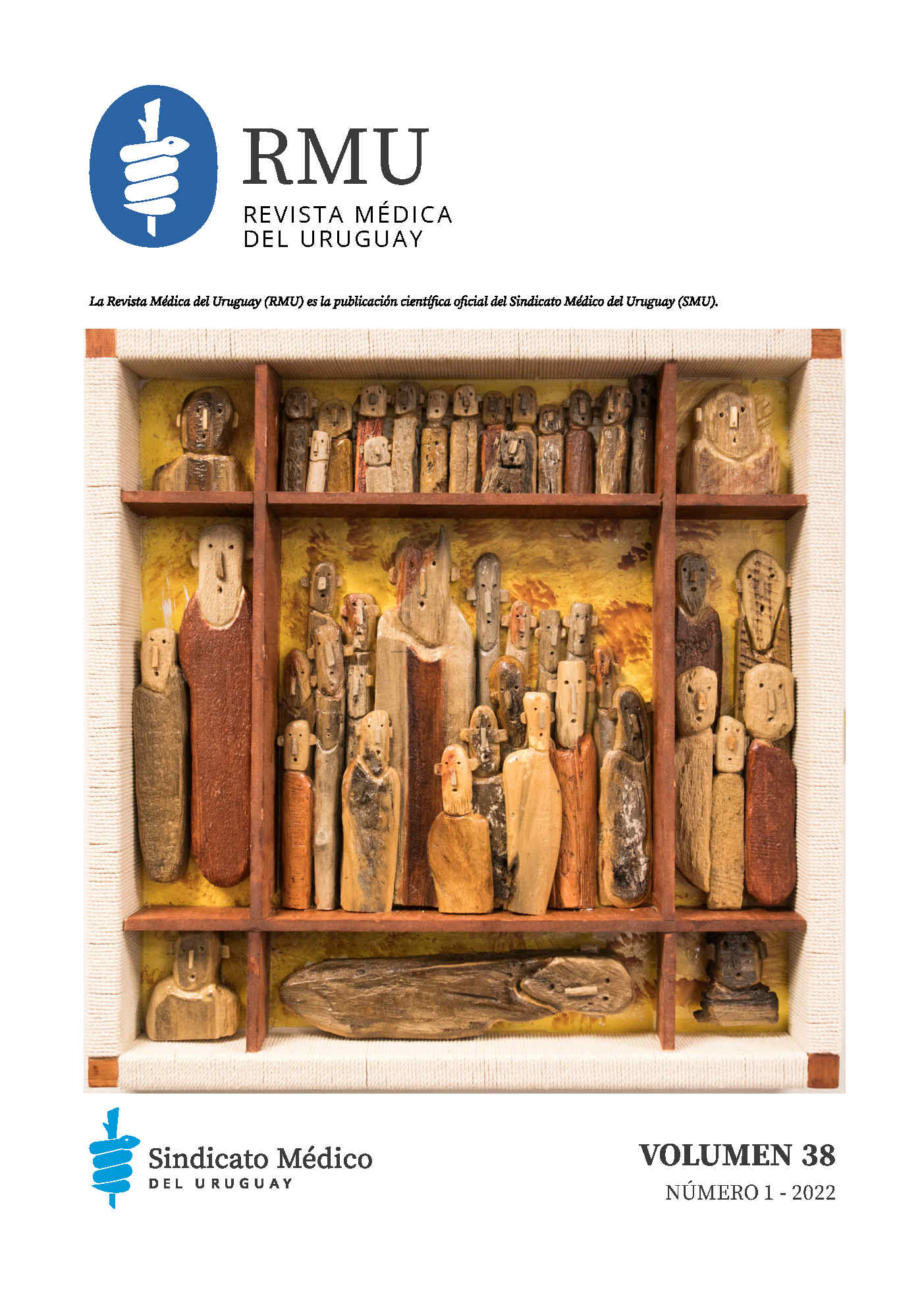First report of hypogastric arteries angioembolization within the context of pelvic trauma in Uruguay
Abstract
Pelvic trauma is an extremely severe condition accounting for high mortality rates, and is the first cause of death in persistent hemorrhagic shock, secondary to several sources of bleeding, such as bone, viscera and mainly veins and arteries. Initial measures aim to reduce the volume of the pelvic cavity and to restore hemostasis. In recent years, growing evidence supports the use of angioembolization in the handling of these patients. The study presents, through a clinical case, the first report in Uruguay of non-selective angioembolization of both hypogastric arteries in the handling of severe pelvic trauma. We will discuss the pathophysiology of severe pelvic trauma through a clinical case, mainly in
terms of indications, results and complications of angioembolization.
References
2) ATLS Subcommittee; American College of Surgeons´Committee on Trauma, International ATLS working group. ATLS Advanced trauma life support: the tenth edition. Chicago: ACS, 2018.
3) Jarvis S, Kelly M, Mains C, Corrigan C, Patel N, Carrick M, et al. A descriptive survey on the use of resuscitative endovascular balloon occlusion of the aorta (REBOA) for pelvic fractures at US level I trauma centers. Patient Saf Surg 2019; 13:43.
4) Wijffels DJ, Verbeek DO, Ponsen KJ, Carel Goslings J, van Delden OM. Imaging and endovascular treatment of bleeding pelvic fractures: review article. Cardiovasc Intervent Radiol 2019; 42(1):10-8.
5) Costantini TW, Coimbra R, Holcomb JB, Podbielski JM, Catalano R, Blackburn A, et al. Current management of hemorrhage from severe pelvic fractures: results of an American Association for the Surgery of Trauma multi-institutional trial. J Trauma Acute Care Surg 2016; 80(5):717-23.
6) Vaidya R, Waldron J, Scott A, Nasr K. Angiography and embolization in the management of bleeding pelvic fractures. J Am Acad Orthop Surg 2018:26(4):e68-e76.
7) Skitch S, Engels PT. Acute management of the traumatically injured pelvis. Emerg Med Clin North Am 2018; 36(1):161-79.
8) Cullinane DC, Schiller HJ, Zielinski MD, Bilaniuk JW, Collier BR, Como J, et al. Eastern Association for the Surgery of Trauma practice management guidelines for hemorrhage in pelvic fracture--update and systematic review. J Trauma 2011; 71(6):1850-68.
9) Papakostidis C, Kanakaris N, Dimitriou R, Giannoudis PV. The role of arterial embolization in controlling pelvic fracture haemorrhage: a systematic review of the literature. Eur J Radiol 2012; 81(5):897-904.
10) Glass NE, Burlew CC. Preperitoneal pelvic packing: how and when. Curr Trauma Rep 2015; 1:1-7.
11) Osborn PM, Smith WR, Moore EE, Cothren CC, Morgan SJ, Williams AE, et al. Direct retroperitoneal pelvic packing versus pelvic angiography: a comparison of two management protocols for haemodynamically unstable pelvic fractures. Injury 2009; 40(1):54-60.
12) Tötterman A, Madsen JE, Skaga NO, Røise O. Extraperitoneal pelvic packing: a salvage procedure to control massive traumatic pelvic hemorrhage. J Trauma 2007; 62(4):843-52.
13) Margolies MN, Ring EJ, Waltman AC, Kerr WS Jr, Baum S. Arteriography in the managment of hemorrhage from pelvic fractures. N Engl J Med 1972; 287(7):317-21.
14) Hundersmarck D, Hietbrink F, Leenen LP, Heng M. Pelvic packing and angio-embolization after blunt pelvic trauma: a retrospective 18-year analysis. Injury 2021; 52(4):946-55.
15) Bonde A, Velmahos A, Kalva SP, Mendoza AE, Kaafarani HM, Nederpelt CJ. Bilateral internal iliac artery embolization for pelvic trauma: effectiveness and safety. Am J Surg 2020; 220(2):454-8.
16) Hymel A, Asturias S, Zhao F, Bliss R, Moran T, Marshall RH, et al. Selective versus nonselective embolization versus no embolization in pelvic trauma: a multicenter retrospective cohort study. J Trauma Acute Care Surg 2017; 83(3):361-7.

This work is licensed under a Creative Commons Attribution-NonCommercial 4.0 International License.













